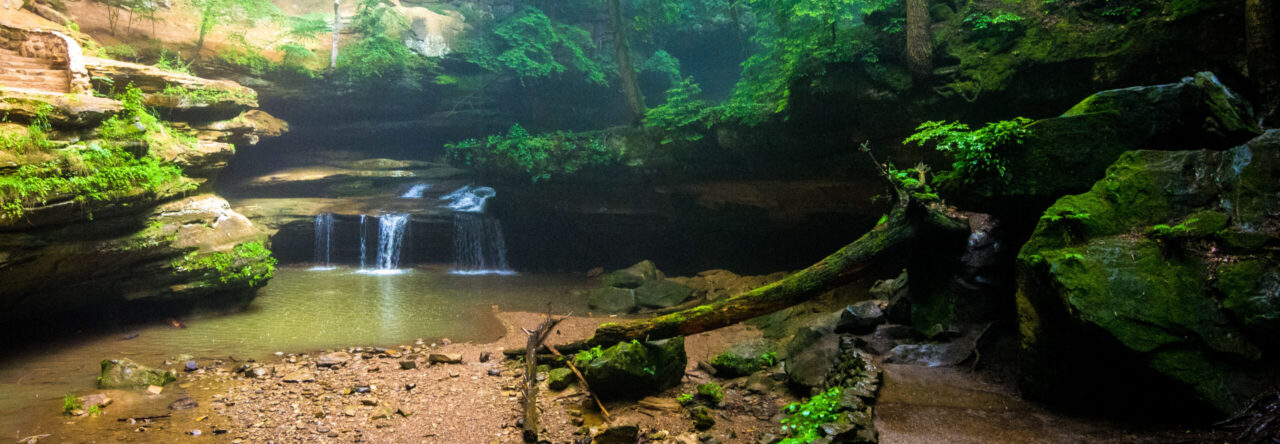
Airports can be a stressful maze of chaos, especially when flight delays and cancellations throw a wrench into your travel plans. But with the right mindset and tactics, you can navigate these hurdles like a seasoned jet-setter. Recently, we put some expert tips to the test and emerged victorious against the travel gods. Let us share our secrets so you too can soar above travel turbulence.

At the Travel & Adventure Show, renowned travel expert Samantha Brown imparted some sage advice for smoother journeys:
- Fly major airlines over budget carriers when possible.
- Book the earliest flights to reduce cancellation risks.
- Avoid layovers which can complicate things.
- Arrive at the airport very early – you can never be too early!
We heeded tips 1 and 4 by booking an early morning flight on American Airlines from Detroit to Greenville. Little did we know how valuable the other tips would prove to be.
This trip to Greenville was full of flight issues. Mechanical issues in Charlotte delayed the arrival of our Detroit-bound plane. But because we arrived at the airport very early per Samantha’s advice, we snagged seats on an earlier departing flight – avoiding a missed connection in Charlotte. American’s staff communicated well and made rebooking a breeze through their app and at the desk. Kudos to them for stellar service!

On the return, a tarmac delay in Greenville nearly made us miss our connection to Detroit. As we inched towards the gate, visions of sprinting through the Charlotte airport danced in our heads.
But we didn’t panic. We employed Samantha’s savviest tactic – knowing the later flight options out of that airport. As soon as we departed the plane, one of us immediately called American’s priority line and swapped us to the next Detroit flight – skipping the inevitable rebooking queue.
By the time we collected our bags, the boarding door for our original flight was likely closed. Thanks to quick thinking and being knowledgeable travelers, we avoided a nightmare scenario.

Tips for Conquering Delays:
- Fly early and skip layovers when possible to reduce chances of delays/cancellations
- Research later flight options from the airport to your destination
- Have that flight info and your confirmation details handy
- Call the airline as soon as a delay is announced to get rebooked ahead of the pack
- Consider trip insurance or a travel rewards credit card for added protection
With some prep work and creative thinking, you can rise above the stress of flight disruptions. Channel your inner Samantha Brown, arrive at the airport early, and be ready to adapt when plans go awry. An adventurous spirit and calm mindset will serve you well.
Thanks for stopping by! Check out our Go See Do Explore Podcast, available wherever you listen to podcasts. To read about some of our previous trips, visit my Trips Page. If you like my photos be sure to “like” my Facebook Page and follow me on Instagram! For my list of gadgets to make your travels easier, click here. To see inside my camera bag, check out my Gear Page.







 Whether you’re a seasoned kayaker or a novice seeking a new adventure, Belle Isle Park promises an unforgettable experience. Embrace the opportunity to escape the urban grind and immerse yourself in the tranquil beauty of this hidden gem, all without leaving the city limits. Pack your sense of wonder and get ready to paddle into an urban oasis like no other. Kayak rentals are available from
Whether you’re a seasoned kayaker or a novice seeking a new adventure, Belle Isle Park promises an unforgettable experience. Embrace the opportunity to escape the urban grind and immerse yourself in the tranquil beauty of this hidden gem, all without leaving the city limits. Pack your sense of wonder and get ready to paddle into an urban oasis like no other. Kayak rentals are available from 










 It started with an irresistible deal – buy one, get one free ferry tickets to whisk us away to the island. With the clock ticking on their expiration date, we pounced on a cozy boutique hotel booking that promised a front-row seat to Mackinac’s annual transition into its quieter, off-season self.
It started with an irresistible deal – buy one, get one free ferry tickets to whisk us away to the island. With the clock ticking on their expiration date, we pounced on a cozy boutique hotel booking that promised a front-row seat to Mackinac’s annual transition into its quieter, off-season self.
























 The quaint lakeside town of Ludington was our home base for the weekend. We checked into the delightfully eclectic
The quaint lakeside town of Ludington was our home base for the weekend. We checked into the delightfully eclectic 
 Back in Ludington, we embarked on a beloved local tradition: the invigorating two-mile hike to Big Sable Point Lighthouse within Ludington State Park’s sprawling dunes and woodlands. Despite the cloudy skies, the solitude and natural splendor made for a rejuvenating escape. We also paid a visit to Stearns Park Beach, where the mercurial Lake Michigan reminded us of its raw power, with crimson flags warning of treacherous currents one day after granting us a serene swimming opportunity the previous afternoon. Shortly after our visit, most of Ludington State Park closed for a year-long renovation, opening back up in July 2025.
Back in Ludington, we embarked on a beloved local tradition: the invigorating two-mile hike to Big Sable Point Lighthouse within Ludington State Park’s sprawling dunes and woodlands. Despite the cloudy skies, the solitude and natural splendor made for a rejuvenating escape. We also paid a visit to Stearns Park Beach, where the mercurial Lake Michigan reminded us of its raw power, with crimson flags warning of treacherous currents one day after granting us a serene swimming opportunity the previous afternoon. Shortly after our visit, most of Ludington State Park closed for a year-long renovation, opening back up in July 2025.
